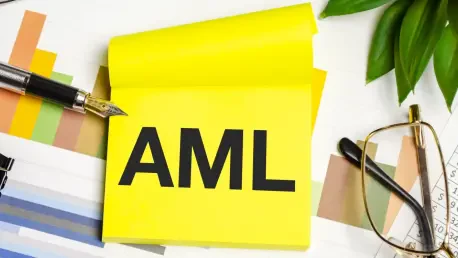As regulations tighten globally, the latest Anti-Money Laundering (AML) guidance for the legal sector introduces new measures and procedures that firms must adopt to protect against fraudulent activities. With the increasing complexity surrounding AML practices, law firms face a daunting task to ensure compliance while delivering seamless services to their clients. This latest guidance outlines various steps, including client due diligence (CDD), identification and verification protocols, and enhanced due diligence (EDD) measures. These evolving requirements necessitate the integration of advanced technologies and systems that can efficiently manage compliance processes without hindering business operations. Through innovative solutions, practices can streamline adherence to these regulations, mitigate risks associated with money laundering, and build a robust compliance framework that serves its clients effectively and responsibly. In exploring the latest AML guidance, it’s essential to understand the nuances and applications of these procedures in detail.
Comprehensive Client Due Diligence Procedures
Client Due Diligence procedures are foundational to AML compliance, focusing on understanding client identity and the legitimacy of transactions. The guidance emphasizes detailed processes to identify ownership and control structures of non-natural persons and ultimate beneficial owners (UBOs). Advanced identity verification tools using biometric technologies like facial recognition enhance this understanding by ensuring accuracy and reliability. Such features are critical in maintaining legal integrity and deriving authentic client profiles. These procedures must be applied before any substantive legal work or financial transactions occur, demanding immediate and secure verification systems. With rising complexities in client structures, law firms are turning to smart solutions like VSiD’s SmartComply platform. It provides multi-bureau KYC options, facilitating background checks against international PEPs, sanctions, and source of funds verification. Ensuring compliance with these steps helps prevent unauthorized transactions that could undermine the ethical standing of the practice, requiring meticulous attention to detail and expertise.
Equipping legal practices with the tools to manage client interactions comprehensively is crucial in preventing money laundering attempts through strategic scrutiny. By leveraging technology-driven solutions, firms can automate procedures and comprehensive oversight processes, offering real-time insights and alerts on any discrepancies. The focus is on meticulously identifying and managing risks tied to clients and associated transactions, including robust monitoring systems. Industry standards dictate ongoing monitoring protocols to capture any changes in client status or transaction behaviors. Simplified Due Diligence (SDD) procedures can be utilized under specific low-risk scenarios; however, firms must ensure that these relaxations always comply with regulatory standards. Practices must adhere to guidelines and continuously develop their framework to monitor relationships effectively, guaranteeing the integrity of dealings across diverse fronts. Firms must remain vigilant, tailoring due diligence practices to specific risk profiles and adjusting control measures in alignment with regulatory prescriptions.
Effective Identification and Verification Protocols
Proficient identification and verification are pivotal elements in the AML landscape, with demands for strict processes to identify individuals and entities intertwined with legal practices. These protocols extend beyond immediate client interactions, encompassing those acting on behalf of clients and UBOs of involved entities. Verification procedures entail using sophisticated technologies such as geo-location, NFC, and anti-spoofing technologies, all designed to uphold security integrity and prevent fraudulent manipulations. It is paramount that these verification measures encompass government-accredited identity checks, incorporating reliable data sources and matching client information against rigorous standards. The introduction of advanced technical solutions ensures the safe and confidential processing of client identities, underlining compliance under shifting regulatory landscapes. During these processes, updated data streams may be routinely integrated to keep client profiles consistent with legal requirements, needing a secure operational framework.
Amidst heightened scrutiny from regulatory bodies, law firms must also employ measures to understand the origin and legitimacy of clients’ funds and wealth. This aspect is essential to fulfill requirements stipulated in risk assessments, ensuring that every transaction reflects substantive and lawful economic purposes. Incorporating open banking standards, providers like VSiD enable automatic data retrieval from clients’ banks, enhancing verification on source of funds and promptly addressing any emerging AML risks. Such protocols are integral in minimizing false positives during evaluations and helping practices maintain a firm grip on compliance controls. Rigorous checks and balances extend throughout the relationship lifecycle, accompanied by continuous monitoring for suspect transactions or irregular patterns that could hint at deeper legal concerns. The application of unique methodologies tailored to diverse client landscapes establishes a secure line of defense, aiding legal processes and bolsters credibility within the industry.
Tailored Enhanced Due Diligence Measures
When engaging with clients or transactions presenting higher risks, enhanced due diligence procedures are indispensable to uphold stringent compliance standards. These procedures involve employing intensive checks to assess source of funds, wealth, and broader economic interactions linked to particular transactions. An augmentative approach utilizing multiple international data sources ensures accurate information collection, reducing exposure to fraudulent activities magnified in high-risk scenarios. VSiD offers an aggregate of national and international databases for monitoring, actively facilitating verification processes tied to PEPs and sanction lists. This comprehensive technology suite is instrumental in interpreting large and complex transactions, essentially acting as a preventive mechanism against money laundering endeavors. It supports operational elements within the legal sphere, ensuring that each interaction benefits from rigorous scrutiny to avoid unauthorized financial movements.
For each new engagement, reassessing the applicability of due diligence is part of necessary workflow revisions, especially with evolving client landscapes and regulatory dynamics. Firms instigate additional measures to manage transactions anonymously, establishing strategic protocols tailored to address money laundering and terrorism financing. Proactively managing these transactions requires analytical insights and adaptive procedures capable of addressing intricate regulatory requirements. Firms adopt seamless monitoring solutions, integrating practices like automated verification sequences and enhanced profiling systems. Strategies facilitate ongoing client evaluations while reducing the administrative burden, allowing practitioners to focus energies on substantive legal work while ensuring rigid compliance standards. Ultimately, effective due diligence measures develop a strong backbone capable of accommodating industry shifts and regulatory changes, fostering transparency and trust within legal interactions.
Seamless Integration and Future Outlook
As global regulations grow stricter, the latest Anti-Money Laundering (AML) guidance for the legal sector has introduced new measures designed to shield firms from fraudulent activity. The complexity of AML practices today presents law firms with the substantial challenge of maintaining compliance without interrupting their seamless client services. This current guidance includes several crucial steps that firms must adopt, such as client due diligence (CDD), identification and verification processes, and enhanced due diligence (EDD) procedures. These evolving demands require the adoption of cutting-edge technologies and systems that facilitate efficient compliance management without disrupting business functions. By leveraging these innovative solutions, firms can simplify adherence to regulations, reduce the risks associated with money laundering, and establish a solid compliance framework that serves clients effectively and responsibly. Understanding the detailed application of these procedures is essential as firms navigate the intricacies of the latest AML guidelines.









